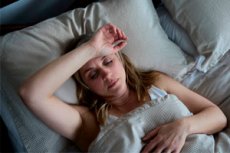New publications
During sleep, the body engages in self-healing activities
Last reviewed: 29.06.2025

All iLive content is medically reviewed or fact checked to ensure as much factual accuracy as possible.
We have strict sourcing guidelines and only link to reputable media sites, academic research institutions and, whenever possible, medically peer reviewed studies. Note that the numbers in parentheses ([1], [2], etc.) are clickable links to these studies.
If you feel that any of our content is inaccurate, out-of-date, or otherwise questionable, please select it and press Ctrl + Enter.

When we go for a long-awaited night's rest, we assume the most comfortable sleeping position possible, and change it many times during the night. Scientists wondered what such uncontrolled positions and movements might mean.
Hardly any of us have seriously considered why a person sleeps in a particular position. Moreover, many people are sure that we choose our sleeping posture consciously. However, scientists are inclined to believe that from the moment the body sinks into sleep, no less complex processes and reactions are triggered in it than in the waking period.
In the past, researchers have suggested that periodic changes in body positions reflect various internal psychological factors. The first to talk about this was Dr. S. Dunkell almost five decades ago. But today's discoveries have completely changed the opinion of specialists, demonstrating a radically different picture.
Canadian psychology specialist D. De Koninck has tested a new freeze-frame technique to investigate changes in people's posture during a night's sleep. As a result of this work, the scientist completely refuted the previously voiced hypothesis that sleeping postures tell about any psychological qualities of a person. It turned out that body positions and movements in sleep depend not so much on comfort or character, but on physiological features. For example, many old people unconsciously start sleeping on their right side: physiologically, this helps stabilize blood pressure values.
It is impossible to have complete control over one's posture during sleep. An example of this is the attempt to prevent sleep apnea or snoring, where patients have to adhere to specific body positions and use additional devices to improve breathing during sleep. These devices come in both relatively simple and quite complex designs, and often force a person to adopt an uncomfortable or unfamiliar sleeping position. However, experts are sure: it is very difficult to change preferences for comfortable rest, so most apnea patients sooner or later give up such "treatment", because the quality of their rest at night is significantly worsened.
Research on nocturnal body positions continues. In particular, experiments on animals have shown that in some cases sleeping on the side of the body improves brain detoxification and even reduces the risk of dementia. Whether the same processes occur in the human brain is still unknown.
Scientists assure: if a person feels sleepy in the morning, does not experience any discomfort or weakness, then we can assume that his posture in sleep was optimal for the body. And in order for the body to rest and recover well, it is important not to think about the correctness of the position and not to try to control it, and then the body will choose the most comfortable position for itself.
Learn more at national Geographic
